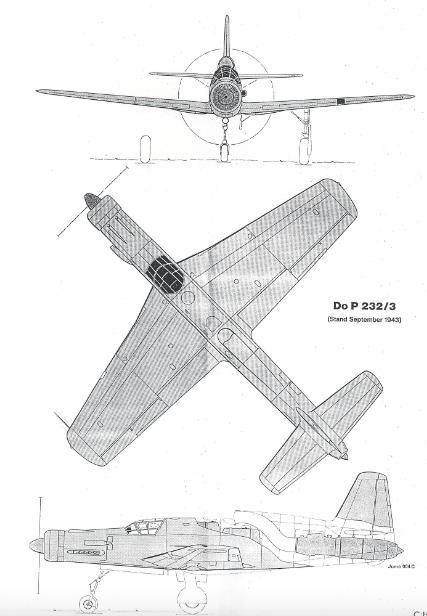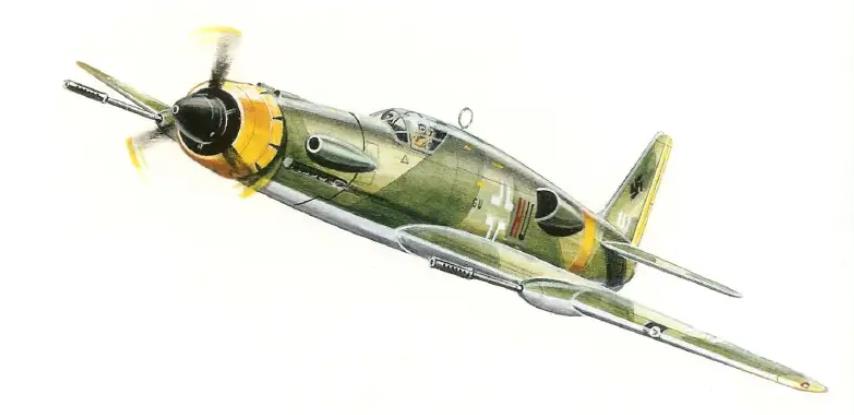| Type |
P.232/2 Single seat bomber, heavy fighter, low level attack bomber |
P.232/3 Single seat bomber, heavy fighter, low level attack bomber |
| Engine |
1 Daimler-Benz DB 603G , 1 Junkers Jumo 004C |
1 Daimler-Benz DB 603G , 1 Junkers Jumo 004C |
| Dimensions |
Length 14,90 m , height 4,50 m, span 13,80 m , wing area 38,5 m2 , |
Length 13,80 m , height 5,60 m, span 13,80 m , wing area 33,5 m2 , |
| Weights |
Empty 5370 kg, loaded 8450 kg, max. take off weight , fuel 2550 l |
Empty 5100 kg, loaded 7750 kg, max. take off weight , fuel 1980 l |
| Performance |
Max.. speed 660 km/h at sea level, 805 km/h at 8700 m cruising speed , range , endurance , service ceiling 13200 m , climb, take off run 740 m |
Max.. speed 675 km/h at sea level, 838 km/h at 8700 m cruising speed , range , endurance , service ceiling 13300 m , climb, take off run 560 m
|
| Armament |
1 30 mm MK 103, 2 20 mm MG 151/20 or 2 MK 103. Bombload 500 kg or 1000 kg |

